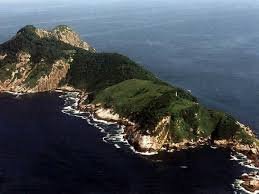Traveling is one of the most enriching experiences in life. It allows us to explore new cultures, meet people from different walks of life, and witness the beauty of nature and architecture across the globe. However, not all destinations are open for tourism. Some places around the world are off-limits due to political conflicts, environmental preservation, safety concerns, or religious restrictions. In this blog, we’ll take a closer look at the most fascinating — yet banned — travel destinations around the world and understand why you can’t pack your bags for these locations.
1. North Sentinel Island, India
Why it’s banned: Dangerous for visitors
Reason: Tribal Protection, Safety Concerns
Located in the Andaman and Nicobar Islands of India, North Sentinel Island is home to the indigenous Sentinelese tribe — one of the last uncontacted tribes in the world. The Indian government has banned any approach to the island to protect the tribe and visitors alike. The Sentinelese have a history of resisting contact with outsiders and have been known to react violently to intrusions. Visiting this island is illegal and can be life-threatening.
2. Area 51, Nevada, USA
Why it’s banned: Military Security
Reason: Classified Government Operations
Area 51 is perhaps the most famous secretive military base in the world. Located in the Nevada desert, it is rumored to house alien technology and classified aircraft testing. While the surrounding area has become a tourist hotspot, entry to the base itself is strictly prohibited and heavily guarded. Trespassing is a federal offense, and violators face severe penalties.
3. Snake Island (Ilha da Queimada Grande), Brazil
Why it’s banned: Deadly Wildlife
Reason: High Population of Venomous Snakes
Just off the coast of Brazil lies Snake Island — home to thousands of golden lancehead vipers, one of the deadliest snakes in the world. The Brazilian government has banned visits to the island to protect both humans and the endangered snake species. The island is so dangerous that only a few scientists are permitted to visit with special authorization.
4. Chernobyl Exclusion Zone, Ukraine
Why it’s banned: Radiation Exposure
Reason: Nuclear Disaster Site
After the catastrophic nuclear disaster in 1986, the Chernobyl area was evacuated and declared uninhabitable due to high levels of radiation. Although some parts of the zone have been opened for controlled tourism, large portions of the area remain strictly off-limits. The Ukrainian government regulates visits, and health risks still exist due to lingering radioactive contamination.
5. Mezhgorye, Russia
Why it’s banned: Secretive Military Town
Reason: Government Control
Mezhgorye is a closed town in Russia believed to house people working on top-secret military projects. Located near Mount Yamantau, which is speculated to be a nuclear bunker or a weapons facility, the town is not accessible to the general public. The Russian government strictly controls access, and no outsiders are allowed to visit.
6. Lascaux Caves, France
Why it’s banned: Preservation of Ancient Art
Reason: Fragile Prehistoric Paintings
The Lascaux Caves in southwestern France are home to some of the world’s most famous Paleolithic cave paintings, dating back over 17,000 years. To preserve the art from damage caused by light, humidity, and carbon dioxide, the French government closed the original caves to the public in 1963. A replica cave, Lascaux II, was built nearby for tourists.
7. North Korea
Why it’s (mostly) banned: Political Reasons
Reason: Authoritarian Regime and Safety Concerns
While technically not completely banned, travel to North Korea is highly restricted and discouraged, especially for citizens of certain countries like the United States. Independent travel is not allowed, and all tourists must be accompanied by government-appointed guides. Any violation of rules can lead to arrest or severe punishment, making it one of the most dangerous countries to visit.
8. Bohemian Grove, California, USA
Why it’s banned: Private Members-Only Club
Reason: Elite Gathering
Bohemian Grove is a private, 2,700-acre campground in California that hosts an annual gathering of some of the most powerful men in the world, including politicians, business leaders, and artists. Entry is strictly limited to invited members of the Bohemian Club. The secrecy surrounding the meetings has fueled many conspiracy theories, but one thing is certain — it’s off-limits to the public.
9. Poveglia Island, Italy
Why it’s banned: Haunted History
Reason: Safety and Preservation
Located between Venice and Lido, Poveglia Island has a dark history as a quarantine zone during plague outbreaks and later as a mental asylum. Locals believe the island is haunted, and the Italian government has banned all public access. The island’s crumbling buildings and eerie atmosphere add to its mystique.
10. Ise Grand Shrine, Japan
Why it’s banned: Religious Restrictions
Reason: Sacred Grounds
The Ise Grand Shrine is one of the most sacred Shinto shrines in Japan. It is rebuilt every 20 years as part of a tradition that dates back centuries. While the shrine attracts many tourists, the inner sanctum is completely off-limits to the public. Only high-ranking priests and members of the Japanese Imperial family are allowed access.
11. Niihau Island, Hawaii, USA
Why it’s banned: Private Ownership
Reason: Preservation of Native Culture
Known as the “Forbidden Island,” Niihau is privately owned by the Robinson family and is home to a small community of Native Hawaiians. The island preserves traditional Hawaiian culture and lifestyle. Access is restricted, and only invited guests, government officials, and relatives of residents are allowed to visit.
12. Heard Island and McDonald Islands, Australia
Why it’s banned: Environmental Conservation
Reason: Remote and Volatile Environment
These volcanic islands in the Southern Ocean are some of the most remote places on Earth. Controlled by Australia, they are a protected nature reserve and are home to rare ecosystems and wildlife. Due to harsh weather conditions and environmental sensitivity, the islands are off-limits to the public. Scientific expeditions require special permits.
Why Are These Destinations Banned?
Travel bans and restrictions exist for several reasons:
- Safety Concerns: Some places pose serious risks to travelers due to natural hazards, deadly wildlife, or unstable governments.
- Cultural and Religious Preservation: Certain sacred sites are closed to the public to respect spiritual traditions.
- Environmental Conservation: Many locations are banned to protect endangered species, ecosystems, or ancient artifacts from human interference.
- Political and Military Secrecy: Restricted zones often involve military operations or sensitive government projects.
Can These Places Ever Be Open to the Public?
In some cases, banned destinations might become accessible with time, improved conditions, or special permission. For example, parts of Chernobyl are now open for guided tours. However, others — like North Sentinel Island or Snake Island — will likely remain permanently closed to protect both their unique inhabitants and potential visitors.
Final Thoughts
Travel inspires curiosity and adventure, but it’s essential to respect the rules and restrictions that protect the world’s most fragile, sacred, and dangerous places. While you may not be able to visit these banned destinations, their stories are fascinating and serve as a reminder of the world’s diversity, mysteries, and complexities.
So next time you’re planning a trip, do your research, respect local regulations, and stay curious — because sometimes, the most intriguing places are the ones you can only explore through stories and imagination.



